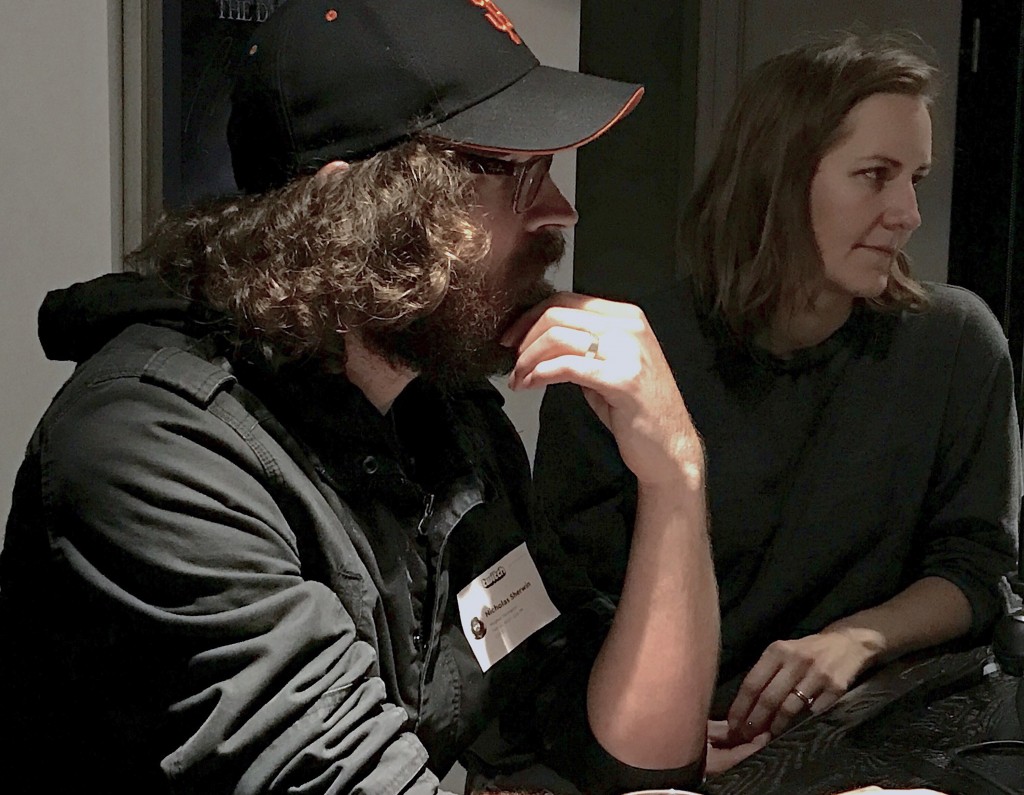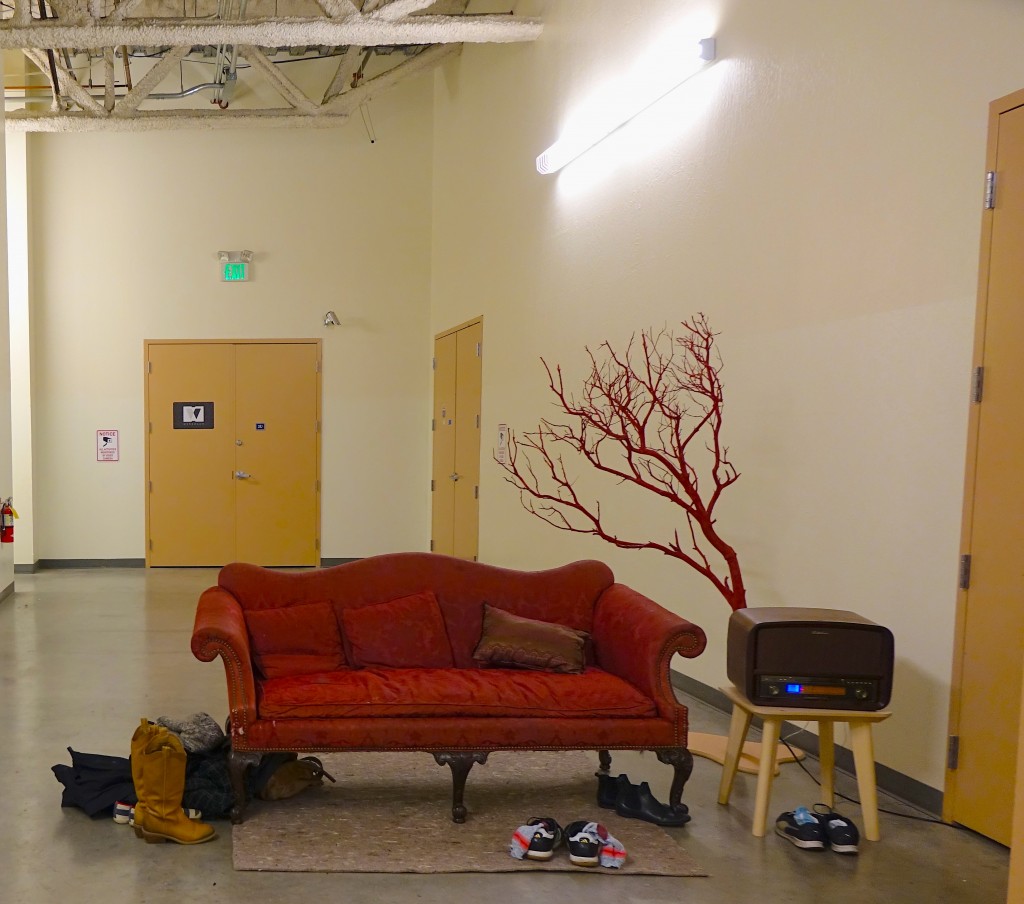[dropcap letter=”A”] hooded prisoner cowers before you in a box. Your goal is to extract information from this captive using any means necessary. “We have very limited time,” an authority figure says to you, “so I suggest you get to work.”
Do you comply? Resist? Either way, it’s not a typical night at your local theater.
This interactive experience is at the heart of “Fear Is What We Learned Here,” an immersive theater show written and directed by Nicholas Sherwin, Jr. and Meghan McHale-Sherwin. Together, the pair make up Screenshot Productions, a theater company whose artistic mission is to “place the individual within universal human experiences that speak to larger cultural or social issues, and thereby ask the individual to consider their responsibility and place within a larger whole.”
Immersive theater is defined by its lack of a fourth wall, which means the audience does not sit safely in seats behind a proscenium arch, but are instead thrust into the action of the scenes themselves. “Fear Is What We Learned Here” is part of a larger movement in immersive theater exploring politics through firsthand physical and psychological experiences.
Sherwin runs Screenshot Productions full time as a producer, writer and actor. McHale-Sherwin is currently a user interface developer at Twitch — a major live-streaming video platform in San Francisco by day — and a writer, performer and media artist for Screenshot Productions by night.

“It definitely shook me in a lot of ways and was the first art form that I saw that intersected everything I was interested in as a creative, whether it was film, sculpture or design,” Sherwin expressed about his first experience in an immersive show.
“I was really interested in [immersive theater] because my background is in contemporary art, specifically in performance and video art,” McHale-Sherwin said. “A few of the immersive installation shows I’ve been to felt like… living within a piece of art in the way that being in a gallery context didn’t provide.”
Sherwin and McHale-Sherwin describe their play as an investigation of “the use of fear as a social framework for control.” The show had its San Francisco debut on the weekend of Jan. 27 at Little Boxes Theater, a small warehouse tucked within the industrial landscape of the Dogpatch neighborhood. The play will continue its run in Los Angeles on March 25.

“Fear Is What We Learned Here” comes at a time when the nation faces heightened political uncertainty. By plunging the audience into situations where the individual has to actively feel, hear, see and interact with the art piece, the performance is meant to tap into core perceptions and decision-making processes, allowing audience members to ponder not only their inner-selves but also their interconnectedness.
“Immersive is one of the most powerful conduits of imparting emotional knowledge to people,” Sherwin said, “because you’re not just reading about a situation, you’re not just passively viewing a situation, you’re actively engaged in having a very active hand in the outcome of the situation.”
The show is divided into 15-minute intervals, where individuals are taken through the production completely on their own. Scenes within the play range from interrogating a prisoner, to being the recipient of workplace misogyny, to playing a video game with a friend, to interacting with a born-again preacher.
“Sometimes people were in the position of being controlled, or having their reality defined by someone else. And other times they were in the position of control and potentially defining somebody else’s reality for them,” McHale-Sherwin said. “We wanted to balance those, and to mimic the experience of not quite knowing which side you’re on. You don’t always know if you are right or wrong, or what is right or wrong.”
Can immersive theater have the power to affect change in today’s political climate? It’s certainly an open-ended question and an answer that will vary largely by individual audience members.
One thing is for sure: “We didn’t want it to feel like propaganda, for one particular viewpoint. We wanted it to feel like asking people to think about what their place was in all of these questions and these issues,” McHale-Sherwin said.
[infobox maintitle=”
How these 360 videos were made:
” subtitle=”For this 360 news story on ‘Immersive Theater: Through a Political Lens,’ the Peninsula Press team used Samsung Gear 360 cameras and an H2n audio recorder. The 360 shots were taken from multiple angles and approaches by using a tripod and mounting the camera to a GoPro head strap. In the editing process, the team used Adobe Premiere Pro, After Effects, Mettle plugins and worked with spatial audio.” bg=”gray” color=”black” opacity=”off” space=”30″ link=”no link”]


